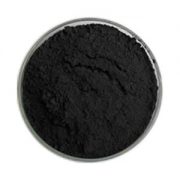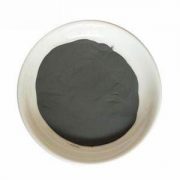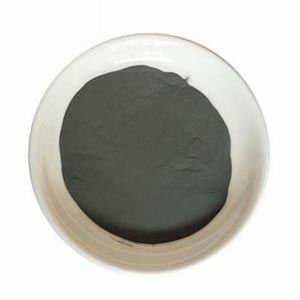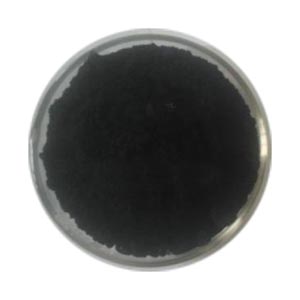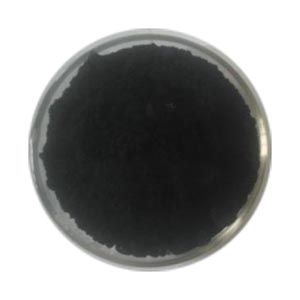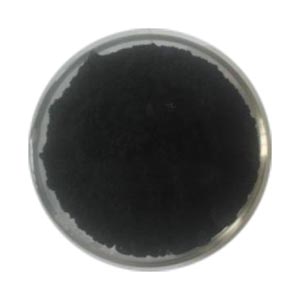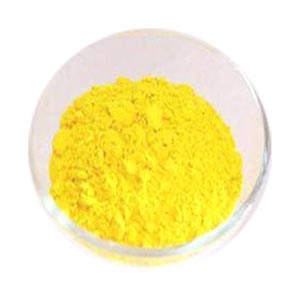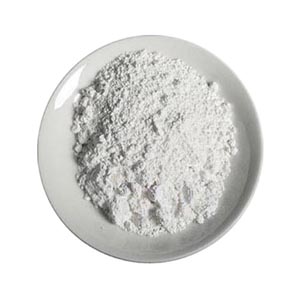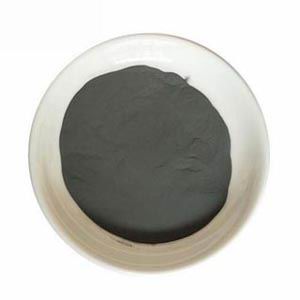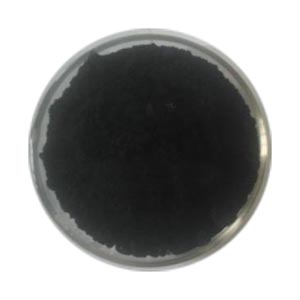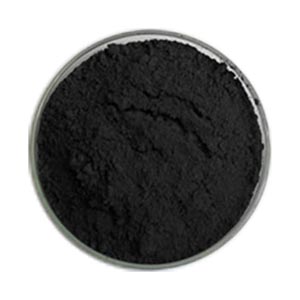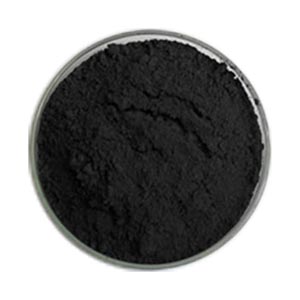
Molybdenum diboride
CAS no. : 12007-27-1
EINECS number: 234-502-8
Molecular formula: B2Mo
Molecular: 106.75
Melting point: 2180 ℃
Density: 8.65 g/cm3
Appearance: black grey powder
Particle size: 325 mesh
Composition:
Mo: 80.7% ; B: 18.3% ; Other impurity: 1%
- 描述
- Inquiry
Storage method: Sealed in a cool and dry place, in a cool environment, should not be exposed to the air, to prevent moisture oxidation agglomeration.
Manufacturing method
1. Reduction method: boron oxide and molybdenum oxide are reduced at high temperature in the presence of carbon
2. Molybdenum and boron powder react under vacuum conditions of 1300 ~ 1400℃.
3. When boron is steamed on molybdenum (or vice versa), molybdenum boride can be formed on the interface.
Purpose:
1. Ceramic coating: Molybdenum boride cermet has high hardness and low relative friction coefficient, the material is applied in sliding
The friction surface acts as a wear reducer. For example, molybdenum boride coating is applied to the inner wall of engine cylinder liner. Also due to the material
It has low reactivity with liquid zinc, and is used in foreign countries for continuous hot-dip galvanized submerged roller surface spraying material to protect submerged roller
Resistant to liquid zinc.
2. Molybdenum boride is used as an efficient catalyst for polysulfide REDOX for high energy density lithium-sulfur batteries. Molybdenum boride nanoparticles
The high electrical conductivity and abundant catalytic active centers make LIPS fast at the high sulfur supported electrode (6.1 mg cm-2)
Rapid REDOX kinetics. In addition, the hydrophilicity of molybdenum boride and its good wettability to the electrolyte can promote the electrolyte
Osmosis and REDOX of LiPS ensure high sulfur utilization under dilute electrolyte conditions.
3. Superhard materials: Each molybdenum atom of borides contains 4 to 5 boron atoms. MoB5 has a Vickers hardness of 37 to 39GPa,
This makes it a potentially superhard material.
Molybdenum boride has a very important position in modern industry, widely used in alloy materials, coating materials, high temperature structural materials
Materials, cathode materials, corrosion resistant materials, wear-resistant materials and other fields.
4. Molybdenum boride powder is considered to be a wear-resistant and corrosion-resistant material, and it is also a composite cermet material of iron and nickel boride
An important ingredient.
5. Molybdenum boride melting point at 2600℃, can do high temperature resistant spray layer. Good wear resistance, heat resistance, resistance and temperature
A special alloy with a linear relationship. It can be used in cermet, wear-resistant coating, high temperature resistance, pot lining, fill-in-blank spraying and coating
Corrosion resistant chemical equipment, transition metal borides are potential substitutes for traditional cemented carbide and high hard materials in technical applications.
And with the progress of science and technology, the application field of molybdenum boride compounds will be further expanded, and this material will be developed
Show more excellent application value and huge market prospects.
相关产品
-
Tungsten silicide
Other name: Tungsten disilicide
CAS no. : 12039-88-2
EINECS no. : 234-909-0
Formula: Si2W.
Molecular weight: 240.011
Density: 9.40 g/cm3
Melting point: 2165 C.
-
Titanium carbonitride
English alias: TITANIUM CARBONITRIDE (7:3); TI (C/N) 30/70 a; TI (C/N) 30/70 b; TI (C/N) 30/70 C; TI (C/N) 50/50 a; TI (C/N) 50/50 b; TI (C/N) 50/50 C; Titanium carbon nitride; TiCN
CAS no. : 12654-86-3
Formula: TiCN
Molecular weight: 121.75
MDL: MFCD01868685
Density: 5.08 g/mL at 25 ℃ (lit.)
Melting point: > 350 ℃ (lit.)
-
Niobium diselenide
Other name: Niobium(IV) selenide, Niobium selenide; Columbium selenide; diselenoxoniobium; niobium(+4) cation; selenium(-2) anion
CAS no. : 12034-77-4
EINECS no. : 234-811-8
Formula: NbSe2.
Molecular weight: 250.8264.
Density (g/mL,25) : 6.3
-
Nano vanadium dioxide VO2
Other name: Vanadium oxide; Dioxovanadium
Appearance: black powder
Grain size: 50nm, 100nm, 500nm
Purity: 99.9%, 98% ( tungsten mingle ) -
Bismuth vanadium tetraoxide
Other name:; Bismuth Vanadate Yellow; Bismuth vanadate; Bismuth Yellow; 184 Yellow ; vanadium(+5) cation; Bismuth vanadate: Bismuth orthovanadate
CAS no. : 14059-33-7
EINECS no. : 237-898-0
Molecular formula: BiO4V.
Molecular weight: 323.9195.
-
Niobium hydroxide
Specification: 99.9%, 99.99%
Other name: Niobium hydroxide oxide
CAS no. : 37349-30-7
Molecular formula: Nb(OH)5Mainly used in catalyst, new energy and other new industry production.
-
Tantalum nitride
Performance characteristics: high purity, no impurity phase detected by XRD
Tantalum nitride (TaN) has superior physical, chemical and mechanical properties (such as high hardness, wear resistance, chemical inertness, thermal stability and low resistance temperature coefficient), and is widely used in wear-resistant coatings, film resistors and diffusion barriers in integrated circuits -
Molybdenum pentachloride
Specification: 99%-99.99%
English alias: Molybdenum (V) chloride; Molybdenumchlorideanhydrous; Molybdenum (V) chloride
CAS number: 10241-05-1
Molecular formula: MoCl5
Molecular weight: 273.205
Melting point: 194°C -
Vanadate zirconium
Molecular formula: ZrV2O7.
Molecular weight: 315.7.
CAS no. : 13981-20-9
Appearance: yellow powder
Used in functional ceramics, structural ceramics and other aspects as pigments.
Description: The use of temperature: 400-1080 ℃
The coefficient of linear expansion: – 10 x 10-6 ℃ – 1 -
Titanium black Ti4O7
Blue Black electrically conductive powder
Produced by proprietary process
High Ti407 Content
Structurally Stabilized Sheer Planes
High Resistance to oxidation and corrosion
in acid and base solutionsStabilized Magneli Phase Titanium Oxide
Electrically Conductive Ceramic PowderD50 particle size: 80nm, 20um

